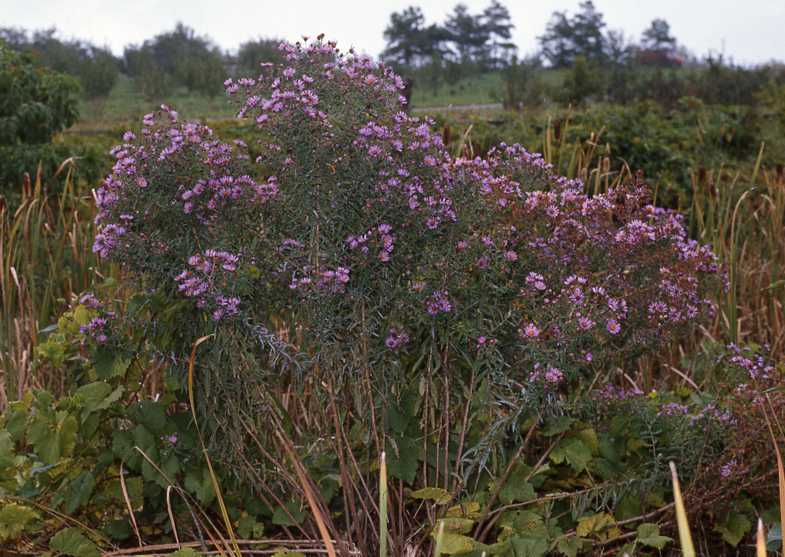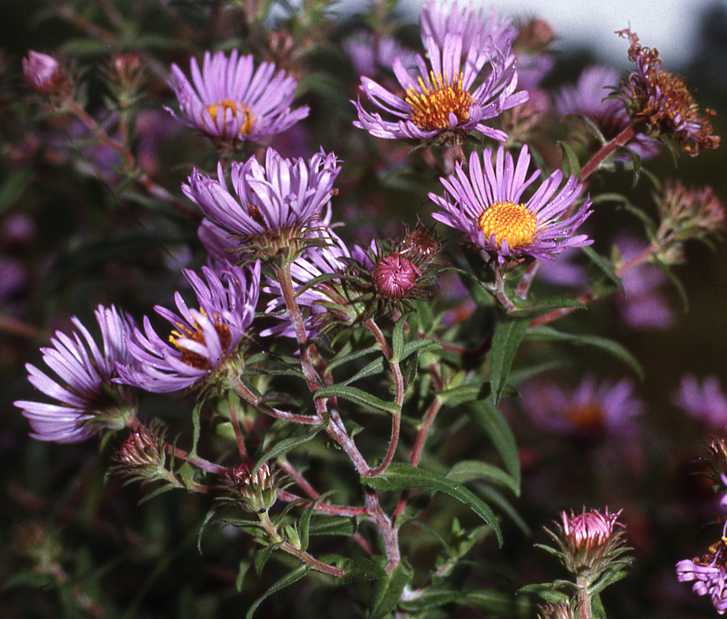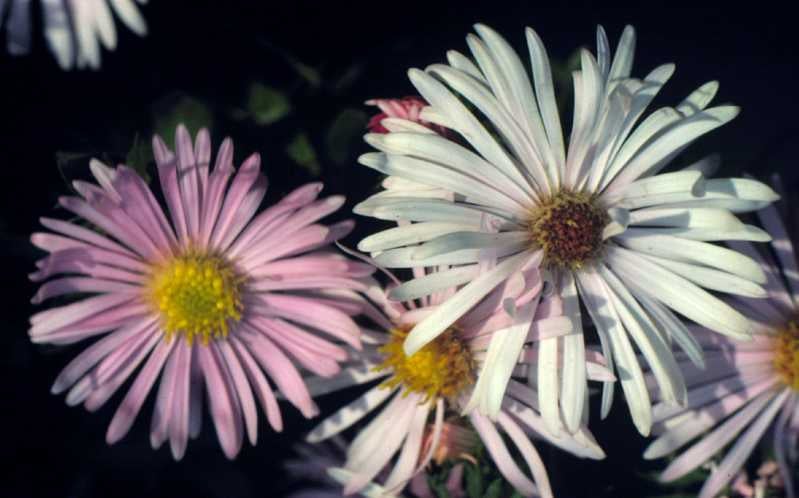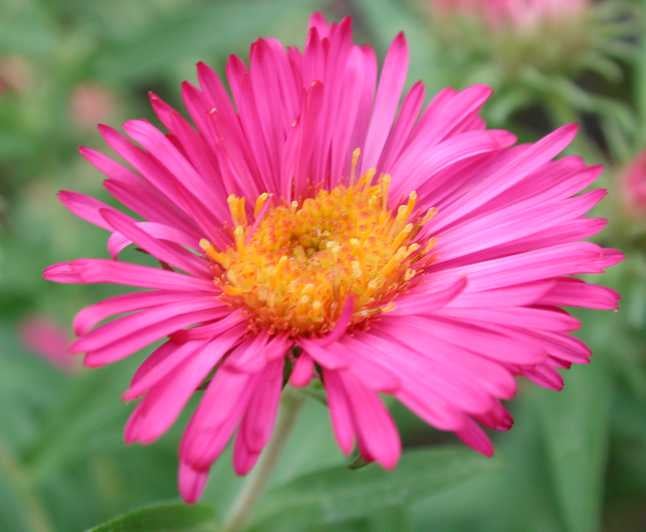New England Aster, Michaelmas Daisy, aster de Nouvelle-Angleterre
Symphyotrichum novae-angliae (L.) G.L. Nesom is native to open, moist to wet, sandy or loamy, rich soils, fields, prairies, meadows, marshy grounds, shrubby swamps, fens, shores, thickets, moist edges of woods, roadsides, railroad rights-of-way (i.e., somewhat weedy) from Manitoba to New Brunswick south to Oklahoma across to Georgia with disjunct populations in Wyoming, Colorado and New Mexico (Brouillet et al. 2006 FNA). The species is distinguished by its thick woody branching rhizomes, oblong or lanceolate, moderately to densely short-soft-hairy, sparsely to moderately stipitate-glandular leaves with auriculate-clasping bases, heads with subequal attenuate and densely dark stipitate glandular phyllaries and (40–)50–75(-100) narrow showy rays that are usually violet purple but can be pink or white. The species is diploid with x=5 (2n=10) throughout its range with single reports of triploid and tetraploid counts from Illinois (Semple 2004). The species is very common in many parts of its range and is the most frequent purple rayed aster in fields and along roadsides in Ontario and the northeastern U.S.
The species is introduced in Europe and in scattered locations in the western U.S. and Canada (probably from escaped cultivars). Many cultivars are offered in the nursery trade.
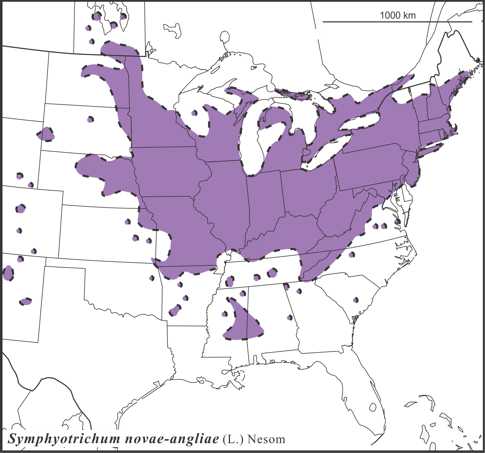
Semple, J.C. 1984. Cytogeographic studies on North American asters. I. range surveys of Virgulus adnatus, V. concolor, V. georgianus, V. grandiflorus, V. novae-angliae, V. oblongifolius, V.patens and V.walteri. Amer. J. Bot. 71: 522-531.
Last revised 16 May 2025 by J.C. Semple
© 2025 J.C. Semple, including all photographs unless otherwise indicated
1-6. Symphotrichum novae-angliae. 1-2 Habit of large plant and inflorescence branch, Grey Co., Ontario. 3. Upper stem leaves, cultivated plant Waterloo, Ontario. 4. Wild white and pink rayed heads, Semple & Chmielewski 5208, Jones Co., Iowa. Cultivar "Alma Potschke", Waterloo, Ontario. 6. Typical virguloid 2n=10 chromosome karyotype with small satellites on largest chromosomes.






